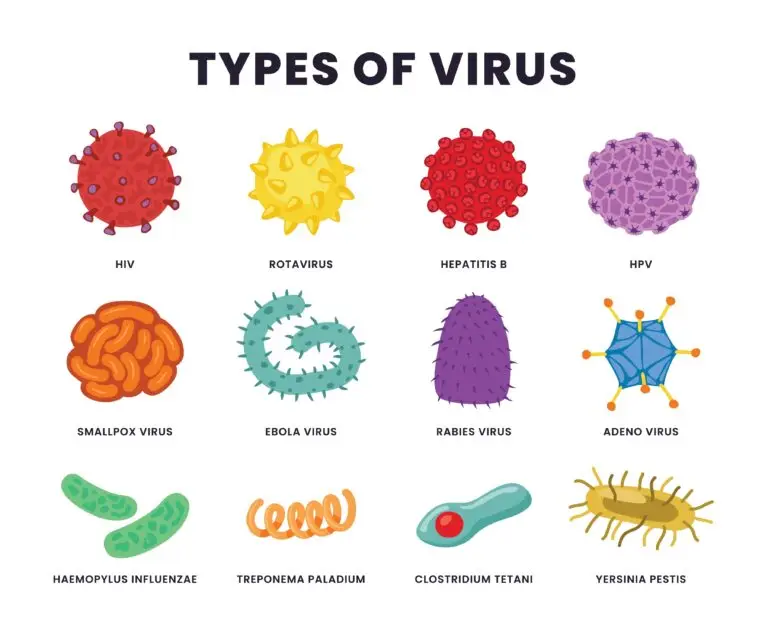Virus

Table of Contents
What is a Virus
A virus is a microscopic infectious agent that can only replicate inside the living cells of organisms. Viruses are acellular entities, meaning they lack cellular structure and cannot carry out metabolic processes independently. Instead, they rely on the host cells’ machinery to reproduce and multiply. Viruses are considered obligate intracellular parasites.
Key Features of Viruses
Genetic Material
Viruses contain genetic material, which can be either DNA or RNA. This genetic material carries the instructions for the virus’s replication and function.
Protein Coat (Capsid)
The genetic material of a virus is surrounded by a protein coat called a capsid. The capsid protects the viral genetic material and may have specific structures, such as spikes or tails, that help the virus attach to host cells.
Envelope (Optional)
Some viruses have an additional outer lipid envelope derived from the host cell membrane. The envelope contains viral proteins and may affect the virus’s ability to infect host cells.
Host Specificity
Viruses are highly specific to the types of cells they can infect. The host range of a virus is determined by interactions between viral surface proteins and receptors on the host cell.
Lack of Cellular Structure
Viruses lack cellular structures such as a plasma membrane, cytoplasm, or organelles. They cannot perform metabolic processes, generate energy, or perform cellular functions independently.
Viral Replication Cycle
- Attachment: Viruses attach to specific receptors on the surface of host cells. This attachment is often highly specific and determines the host range of the virus.
- Entry: Viruses enter the host cell by direct fusion with the host cell membrane or endocytosis. The viral genetic material is released into the host cell.
- Replication and Transcription: The viral genetic material is replicated and transcribed inside the host cell using the host cell’s machinery. New viral RNA or DNA, as well as viral proteins, are synthesized.
- Assembly: Newly synthesized viral components are assembled into complete viral particles inside the host cell.
- Release: The assembled viruses are released from the host cell by causing the host cell to burst (lysis) or by budding through the host cell membrane. The released viruses can then infect new host cells.
Human Health and Viruses
- Disease Causing Agents: Many viruses are responsible for causing diseases in humans, ranging from the common cold and influenza to more severe illnesses such as COVID-19, caused by the SARS-CoV-2 virus.
- Vaccines: Vaccines stimulate the immune system to recognize and defend against specific viruses. They often contain harmless parts of a virus (such as proteins) or weakened or inactivated forms.
- Antiviral Medications: Antiviral drugs are developed to target specific stages of the viral replication cycle and inhibit viral replication. They are used in the treatment of certain viral infections.